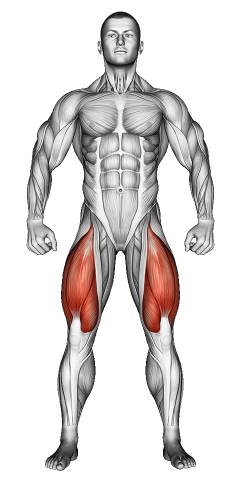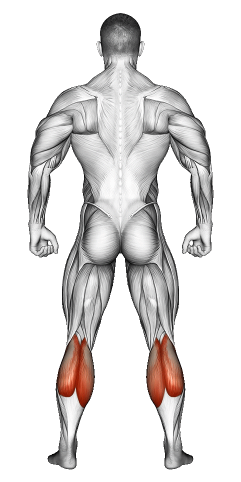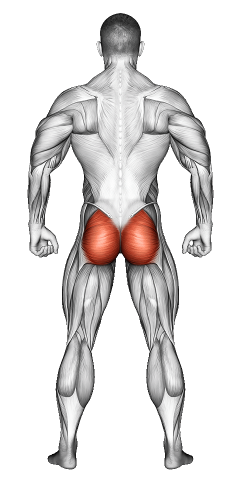High Bar Back Squat: Video Tutorial & Exercise Guide

Written By: Claude Michael
Updated: Oct 13, 2024
| Workout | High Bar Back Squat |
| Primary Muscle Group | Quads |
| Secondary Muscle Group | Calves, Glutes |
| Equipment Required | Barbell, Sqaut Rack |
| Force Type | Push |
| Mechanics | Compound |
| Exercise Type | Strength |
| Difficulty | Intermediate |
High Bar Back Squat: Video Tutorial & Exercise Guide
- 1.High Bar Back Squat: Muscle Groups
- -1.1Primary Muscle Group
- -1.2Secondary Muscle Group
- 2.High Bar Back Squat: Step-by-Step Guide
- 3.High Bar Back Squat: Overview
- 4.High Bar Back Squat: Benefits
- 5.High Bar Back Squat: Pro Tips & Advanced Techniques
- 6.High Bar Back Squat: Progression Plan
- 7.High Bar Back Squat: Frequently Asked Questions (FAQs)
High Bar Back Squat: Step-by-Step Guide
- Step 1: Step under the barbell on a squat rack and position it across your upper traps (high on your shoulders, just below the base of your neck). Grip the bar with your hands slightly wider than shoulder-width apart.
- Step 2: Stand tall to lift the bar off the rack, taking a step or two back into your starting position. Your feet should be shoulder-width apart, with your toes slightly pointing outward.
- Step 3: Engage your core, keep your chest up, and begin the squat by bending at your hips and knees, lowering your body as if sitting back into a chair. Keep your back straight and your weight in your heels.
- Step 4: Lower yourself until your thighs are at least parallel to the floor or slightly below, depending on your mobility. Ensure your knees track over your toes and don’t cave inward.
- Step 5: Drive through your heels to return to the standing position, straightening your legs and squeezing your glutes at the top. Maintain control of the barbell throughout the movement.
High Bar Back Squat: Overview
The High Bar Back Squat is a fundamental strength-training exercise that targets the lower body, particularly the quadriceps, glutes, and hamstrings. This variation of the back squat positions the barbell higher on the traps, promoting a more upright torso throughout the movement.
High bar squats are commonly used by Olympic lifters and athletes looking to improve leg strength, power, and overall performance. The movement is ideal for building muscle in the legs while also enhancing core stability and posture.
High Bar Back Squat: Benefits
The high bar back squat emphasizes the quadriceps more than other squat variations, making it a great exercise for developing leg strength and size. It also engages the glutes, hamstrings, and lower back muscles, offering a complete lower-body workout.
This squat variation promotes an upright torso, which places less stress on the lower back compared to low bar squats, making it a safer option for those with back concerns. Additionally, high bar squats improve functional strength, mobility, and overall athletic performance.
By increasing core engagement and stability, high bar back squats also improve balance and coordination, which can translate into better performance in sports and other compound lifts.
High Bar Back Squat: Pro Tips & Advanced Techniques
Focus on keeping your chest up and core engaged throughout the entire movement to maintain proper posture. Avoid leaning too far forward, which can place unnecessary strain on your lower back. For an added challenge, try performing tempo squats, slowing down the lowering phase to increase time under tension. Ready to build powerful legs and core strength? Let’s squat!
High Bar Back Squat: Progression Plan
Beginner
Intermediate
Advanced
High Bar Back Squat: Frequently Asked Questions (FAQs)
What muscles do High Bar Back Squats target?
+High bar back squats primarily target the quadriceps, glutes, and hamstrings, while also engaging the core and lower back for stability during the movement.
Are High Bar Back Squats suitable for beginners?
+Yes, high bar back squats are suitable for beginners, but it’s important to start with light weights and focus on mastering proper form before increasing the load.
How can I make High Bar Back Squats more challenging?
+To increase the difficulty, you can use heavier weights, incorporate tempo squats by slowing down the lowering phase, or add pause squats at the bottom of the movement. You can also increase the number of sets and reps for added intensity.
How often should I include High Bar Back Squats in my routine?
+Include high bar back squats 2-3 times per week as part of your leg day or full-body workout. They can be paired with other lower-body exercises like deadlifts or lunges for a well-rounded leg routine.
What common mistakes should I avoid when doing High Bar Back Squats?
+Avoid leaning too far forward or letting your knees cave inward during the movement. Keep your chest up, core tight, and ensure your knees stay aligned with your toes to maintain proper form.
Share
Don’t Wish for It, Work for It – Join the FlexXP Newsletter Today!
Thank you for signing up for the FlexXP Newsletter!
This site is protected and the Google Privacy Policy and Terms of Service apply.


